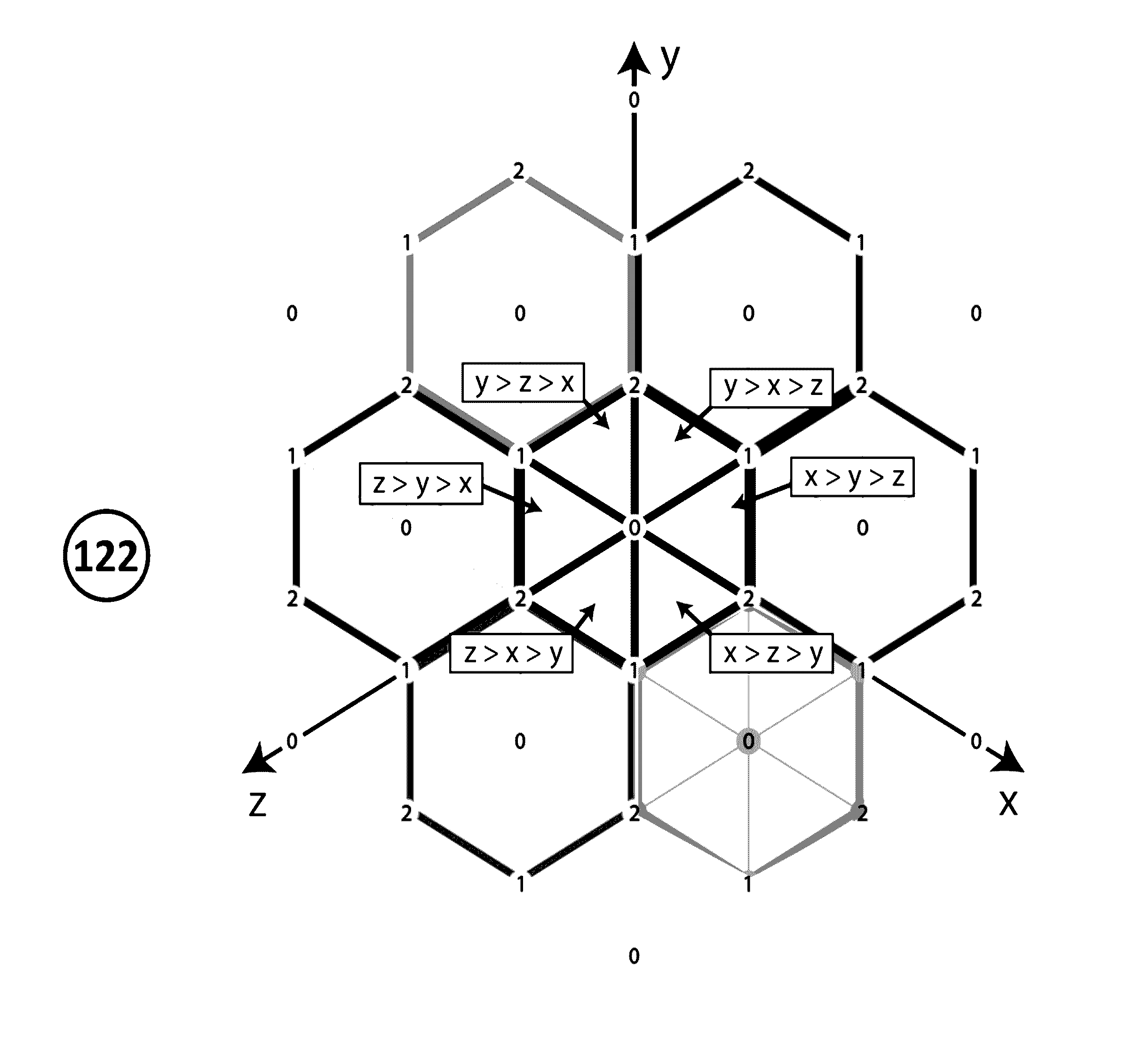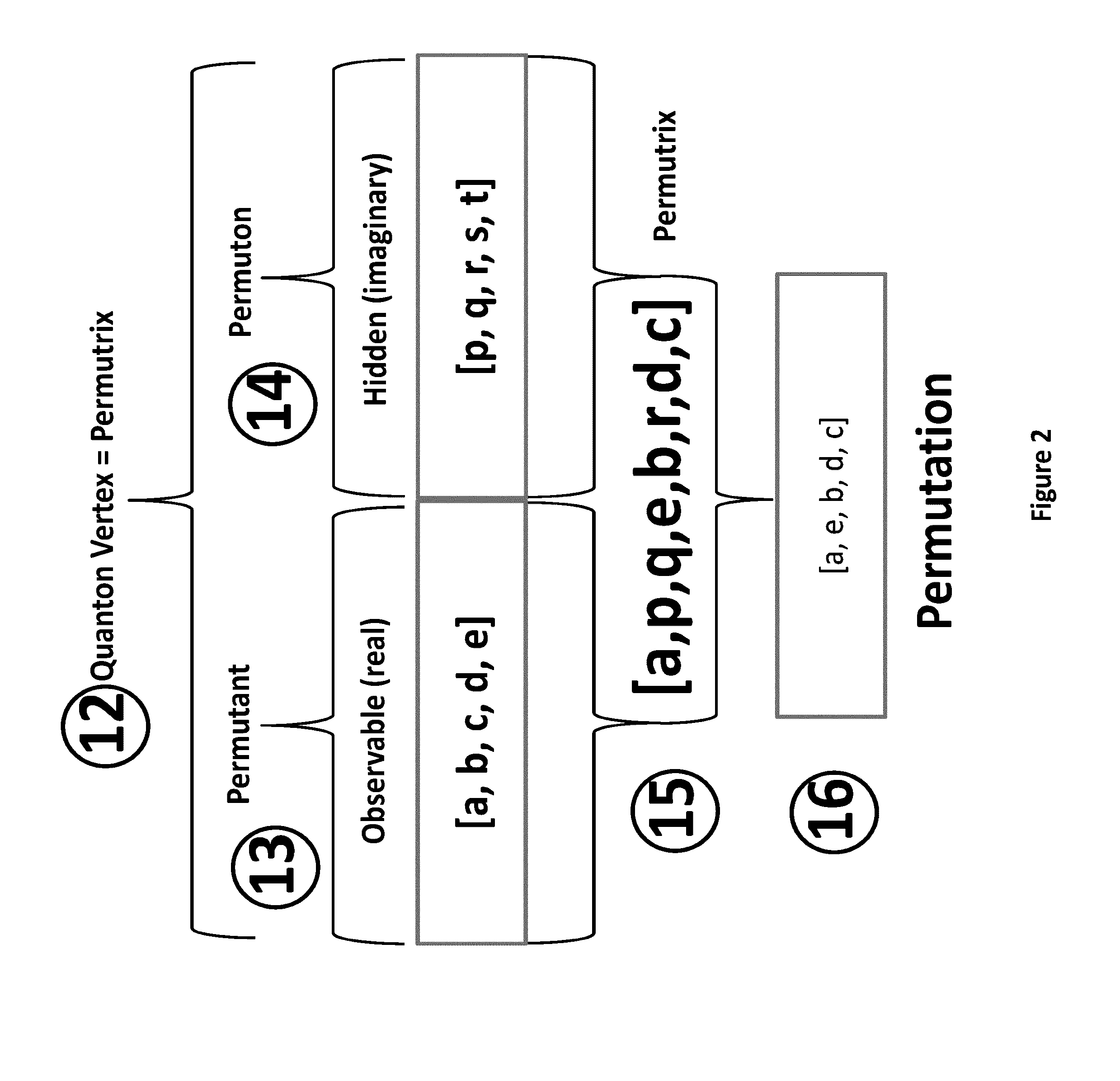Quanton representation for emulating quantum-like computation on classical processors
a quantum-like computation and quantum representation technology, applied in computing models, genetic algorithms, instruments, etc., can solve problems such as weak signals or very high combinatorial complexity, non-obvious integration, and difficult to distinguish weak signals from nois
- Summary
- Abstract
- Description
- Claims
- Application Information
AI Technical Summary
Benefits of technology
Problems solved by technology
Method used
Image
Examples
example
[0545]mapM_print (map (to Base List (snd “cyclal permutation Template”)) [0 . . . 7])[0546][0,0,0][0547][1,0,0][0548][2,0,0][0549][0,1,0][0550][1,1,0][0551][2,1,0][0552][0,2,0][0553][1,2,0]
Procedure for Embedding Permutations into Quantons as Minimal Orbitopes
[0554]The permutation orbitope of transition relationships between permutation as per TABLE 6 (see earlier) requires, for data of size n a number of data points factorial in the size of n. In order to improve the efficiency of memory requirements, the Birkhoff polytope is can be used which reduces the number of data points to n2 variables and constraints, but this is still significantly more than the n variables one could use to represent a permutation as a vector or in the cycle forms shown in the present disclosure.
[0555]However, by combing the recent teachings of Michel X. Goemans, “Smallest compact formulation for the permutahedron”, Mathematical Programming, October 2015, Volume 153, Issue 1, pp 5-11, Springer Publishing, ...
PUM
 Login to View More
Login to View More Abstract
Description
Claims
Application Information
 Login to View More
Login to View More - R&D
- Intellectual Property
- Life Sciences
- Materials
- Tech Scout
- Unparalleled Data Quality
- Higher Quality Content
- 60% Fewer Hallucinations
Browse by: Latest US Patents, China's latest patents, Technical Efficacy Thesaurus, Application Domain, Technology Topic, Popular Technical Reports.
© 2025 PatSnap. All rights reserved.Legal|Privacy policy|Modern Slavery Act Transparency Statement|Sitemap|About US| Contact US: help@patsnap.com



